A hot cup of tea can make you feel warm and cozy on a cold day. Even better, tea is a healthy, low-calorie drink that has a range of important benefits for your well-being. Drinking tea may even help you lose weight.
Tea is the world’s second most consumed drink (after water), according to the Food and Agriculture Organization of the United Nations. In many places, tea is more than just refreshment. In countries such as Japan and the United Kingdom, preparing and drinking tea are an essential part of ceremonies and daily rituals.
Tea seems like the simplest of beverages, but not all tea is alike. There are many different types of tea, each with a unique origin, flavor and nutritional profile. Figuring out which is best for you can be confusing, so we put together this deep dive into the wide world of tea.
What is Tea?
True tea, derived from the Camellia sinensis shrub native to Asia, has a rich history of cultivation in China, India and neighboring countries. According to the tea experts at ArtfulTea, there are two primary varieties: Camellia sinensis var. sinensis, known for its mellow taste and popular in East Asia, and Camellia sinensis var. assamica, with a more robust flavor, commonly found in India.
It’s important to note that herbal teas, while often referred to as tea, are actually infusions. Mint, chamomile and hibiscus are among the plants used to create herbal teas, infusing their leaves and flowers with flavorful essential oils. Throughout history, herbal teas have been utilized in folk medicine for their therapeutic benefits in treating various ailments.
Different Types of Tea
Tea producers employ different processes to prepare camellia leaves and flowers after harvesting, which ultimately leads to the distinct flavors and colors of each tea variant. Here’s a guide to help you select the perfect tea that suits your preferences. Discover the art of tea preparation and explore a variety of flavors and types of tea!
Black

Black tea is the most commonly found variety, often associated with well-known tea brands. It undergoes a process where harvested leaves are allowed to wilt and oxidize in the presence of air for a day or more, resulting in a transformation from green to a rich brownish-black color and a hearty taste.
Notably, black tea boasts the highest caffeine content among all teas, roughly half the amount found in a cup of coffee. Its infusion yields a captivating dark, coppery hue, accompanied by a robust and full-bodied flavor.
Oolong
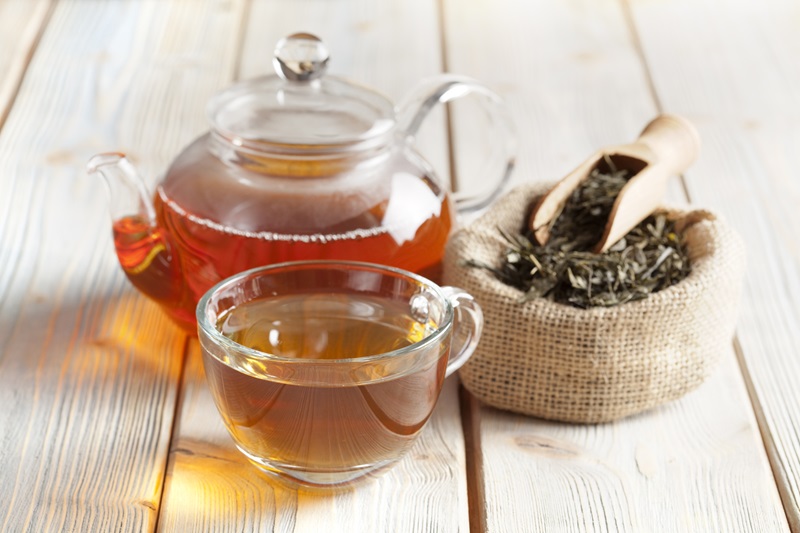
Oolong tea is crafted by partially oxidizing the leaves, giving them a brown hue, though not as deep as black tea. Through rolling, the tea leaves are gently bruised, unlocking the enzymes and essential oils that create delightful flavors. When brewed, oolong tea exhibits a captivating orange to amber color, presenting a milder taste compared to black tea.
White
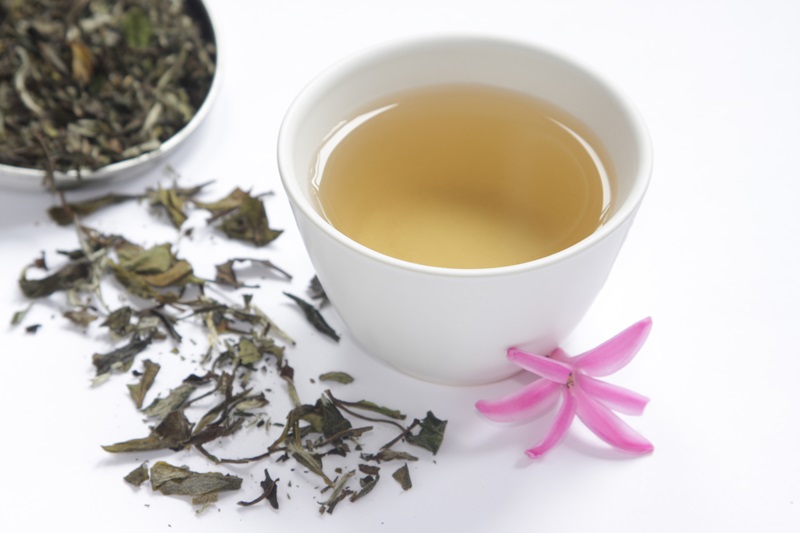
White tea, beloved by tea connoisseurs, delights with its delicately pleasant flavor. Crafted from the fresh tips and buds of the camellia plant, it undergoes minimal oxidation before being carefully dried, ready to be brewed. Notably, white tea yields only trace amounts of caffeine and imparts a pale yellow hue when steeped.
Green

Green tea leaves are carefully processed right after harvest to preserve their vibrant green color and prevent oxidation. In Japan, the leaves are steamed, while in China, they are pan-fired. The result is a light green or yellowish tea with a delicate floral flavor. Some pan-fried green teas even offer a subtle smoky note. Additionally, green tea contains approximately half the caffeine content of black tea.
Matcha

Matcha, a popular type of green tea in Japan, is derived from plants that are shaded for a minimum of three weeks before harvesting. This shading process enriches the plants with chlorophyll, resulting in a vibrant green hue. Moreover, it imparts a delightful umami flavor to the tea, setting it apart from other green tea varieties, while also providing a gentle caffeine boost.
To create matcha, the tea leaves undergo a meticulous grinding process, transforming them into a fine powder. Apart from being brewed as a traditional tea, this versatile powder can be incorporated into smoothies and used in various baked goods. Indulge in the delectable flavors of our Matcha Cookies recipe and savor the refreshing combination of this Orange Ginger and Matcha Protein Shake.
Pu-erh
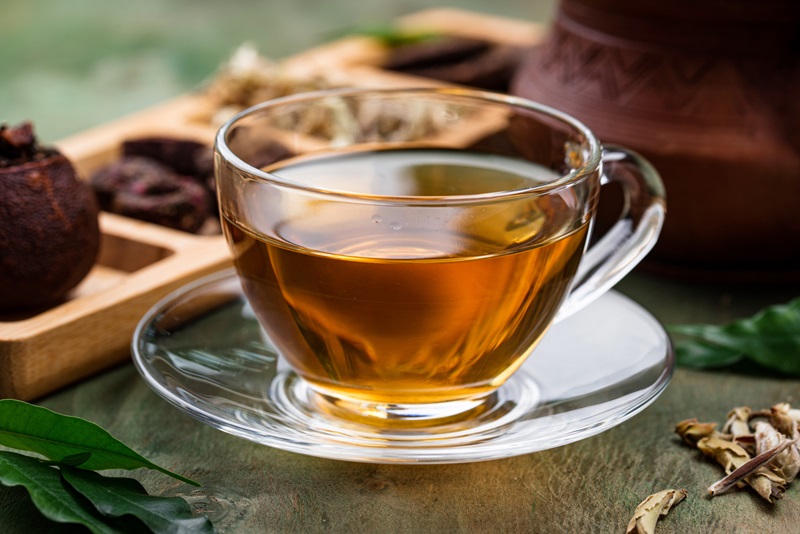
Pu-erh tea, pronounced “poo-air,” is gaining popularity among tea enthusiasts in the United States. Similar to black tea, it undergoes oxidation and then fermentation, much like sauerkraut or wine, followed by aging for several months or even up to two decades.
During the fermentation process, the tea develops a smooth and subtly sweet flavor. Just as with wine, aging enriches and deepens the flavors. The resulting tea is a dark brown or black hue, with some noting hints of plum in its taste.
Purple
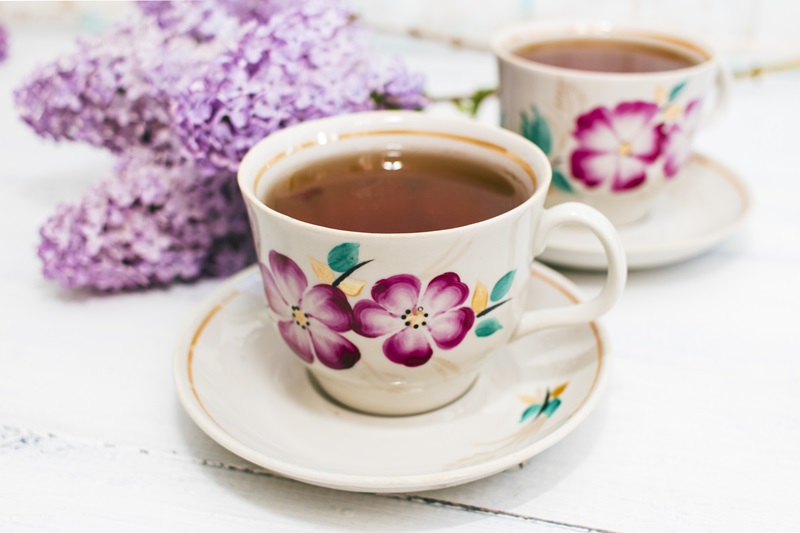
Purple tea has been making headlines and appearing on store shelves lately. While it comes from the same plant species, its leaves have a distinct purple hue. This beautiful color is attributed to anthocyanin, a powerful antioxidant found in other foods like blueberries, red onions and wine.
Similar to oolong tea, purple tea leaves undergo partial oxidation. When it comes to flavor, purple tea has been described as a delightful blend of green and black tea. Its unique taste is truly a treat for the senses.
Other Tea Options

Many people around the world brew beverages from other plants besides camellia. These are a few of the choices.
Herbal Tea
Ginger and lemon balm are exquisite examples of aromatic herbs that yield delightful teas. These herbs are typically unoxidized, minimally processed, and can even be cultivated at home. When you’re ready to enjoy a cup of tea, simply pluck a few leaves. It’s worth noting that herbal teas are generally low in caffeine or completely caffeine-free, making them a perfect choice for a soothing beverage.
Rooibos Tea
Rooibos (pronounced “roy boss”) is an increasingly popular type of tea derived from a shrub indigenous to South Africa. The plant’s green leaves and yellow flowers undergo oxidation and fermentation, resulting in a distinct reddish hue and a delicately sweet flavor reminiscent of vanilla. Notably, rooibos tea is naturally caffeine-free, making it a delightful choice for those seeking a soothing and refreshing beverage.
Chai
Ever come across “chai” on a coffee shop menu and wondered what it actually is? Contrary to popular belief, it’s not just another type of tea. Chai is a delightful blend of robust Indian black tea, rich milk, and a medley of aromatic spices like cardamom, ginger and cloves. Give it a try and let your taste buds embark on a flavorful journey!
Health Benefits of Tea
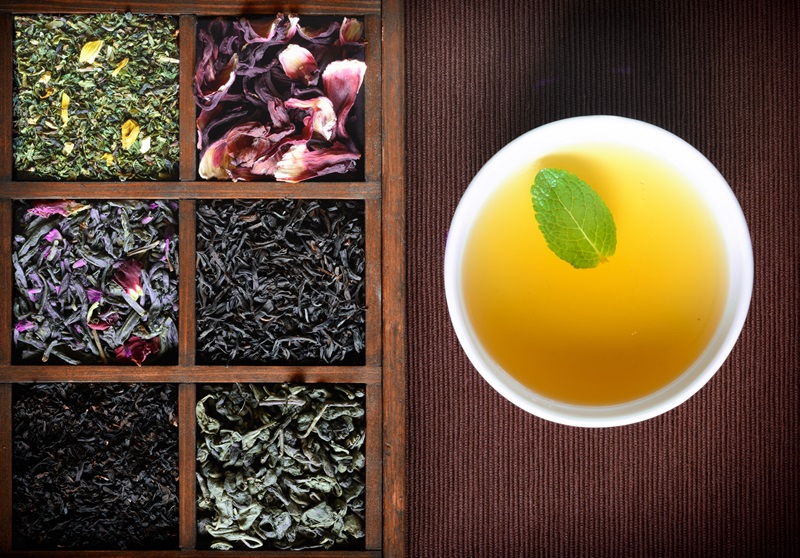
You could say that tea is just flavored water. And that’s a good thing. Plain tea has no calories, sugar or fat. It keeps you hydrated while also perking up your taste buds.
Drinking tea, however, offers you valuable health benefits that you can’t get from water. For instance, standard and herbal teas may provide you with small but valuable amounts of potassium, phosphorous, magnesium, sodium, copper and zinc. Beyond nutrition, drinking tea can give your health a boost in a variety of ways.
Cancer
Teas made from the camellia plant contain compounds called catechins and theaflavins that “may reduce the risk of various types of cancers in humans,” according to a report from the journal Current Pharmaceutical Designs.
Strokes
In the same report, the researchers note that individuals who drink three or more cups of tea a day have a 21 percent lower risk of stroke than those who drink less than one cup per day on average.
Cholesterol and Blood Pressure
Consuming the catechins in green tea led to a reduction in body fat, systolic blood pressure and low-density lipoprotein (LDL) cholesterol in a study, published in the journal Obesity.
Inflammation
Black tea contains flavonoids that can help reduce inflammation, according to a study published in Critical Care Medicine.
Teeth
White tea is rich in fluoride, catechins and tannins that can strengthen your teeth, safeguard against plaque, and enhance resistance to acid and sugar-induced wear, says a report from the University of Pennsylvania Health System.
Stress
An amino acid abundant in green tea known as L-theanine, along with the low dose of caffeine, was associated with improvements in “mood, cognition and a reduction of stress and anxiety-like symptoms,” according to a study published in the journal Phytomedicine.
Brain
A University of Pennsylvania Health System report highlights that l-theanine may help prevent the onset and progress of cognitive diseases such as Parkinson’s and Alzheimer’s diseases.
Body Fat
People who consumed purple tea for four weeks had a significant reduction in their “weight, body fat mass, abdominal fat, body fat ratio, waist size, hip size, and abdominal and right upper arm fat thickness,” according to a study in the International Journal of Biomedical Science. The researchers theorize that the nutritional compounds in the tea inhibited the absorption of fat from food.
Choosing and Brewing

Loose Tea vs. Tea Bags
Tea bags are convenient to store and to use. If you buy bags, check the expiration date. Stale tea has a flat taste. For the best flavor from a tea bag, look for brands that use muslin fabric or silk rather than paper, which can seep into the flavor of the tea. Premium brands use whole tea leaves, rather than crushed leaves.
With whole leaves, you get the full flavors and aromas. For that reason, tea lovers often prefer brewing with loose leaf tea. All you need is an infuser for your pot or cup to use loose leaves. When shopping for loose leaf tea, give it a sniff before buying. It should smell bright and fresh, not faded or funky.
Heating and Steeping
Just like there are different types of tea, there are different ways to prepare them. When you’re ready to prepare your tea, you want the hot water to release the tea’s flavorful and aromatic oils, but not scald the leaves. For black, Pu-ehr, rooibos and most herbal teas, the water should be just short of boiling. Oolong tastes best brewed at 195 degrees F. Heat the water to about 180 degrees F for green, white or purple tea.
The process of soaking in the hot water, or steeping, extracts the flavors, aromas and nutrients from tea leaves. Black tea and herbals teas generally reach their peak of flavor after steeping for about four minutes. Green and white tea are best after three minutes.
If you like a stronger taste, you can let both go for another minute or so, but any longer risks the tea developing a bitter flavor. A perfectly brewed cup of tea is a simple pleasure that can make any day a little cozier.

